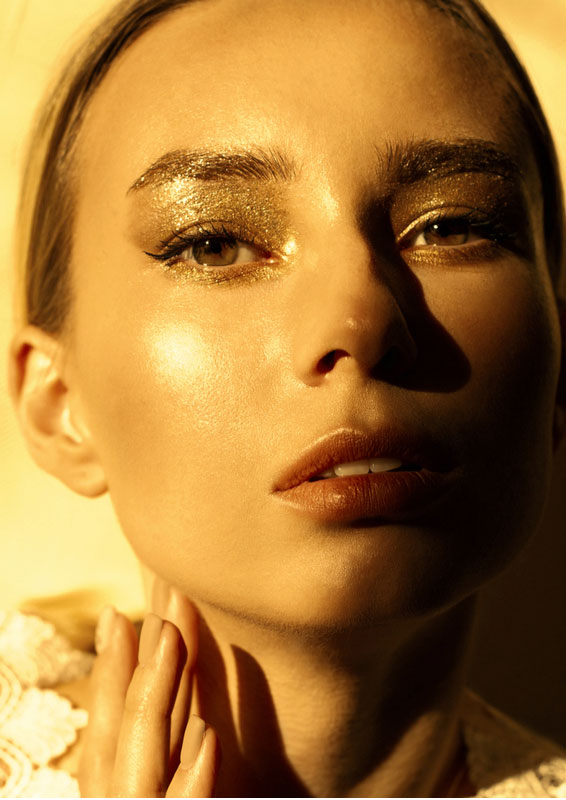Eyelid Surgery or Blepharoplasty:
A technique where excess skin, fat, lax muscle is removed, tightening up a droopy eye area, taking away that constantly tired look. Some individuals’ vision may actually be improved when skin that is sagging over the eye impedes optimal vision and the eyelid is surgically lifted. The incisions are minimal with little evidence of scarring. The effects of both lower and upper lid surgery typically are long-lasting.


Blepharoplasty:
A blepharoplasty is a term used to describe an eyelift. This can either be an upper eyelid blepharoplasty where skin and usually fat of the upper eyelid is contoured to give a cleaner, more youthful upper eyelid appearance. This eliminates the tired look and overhanging upper eyelid skin. Alternatively, lower eyelid blepharoplasty typically involves a similar removal of skin and occasionally fat from the lower eyelid to achieve a rejuvenated, less tired look to the lower eyelid.
While upper eyelid blepharoplasty is relatively straightforward and has undergone very little change and yields a long -lasting aesthetic improvement with very little recovery (downtime), lower eyelid blepharoplasty is perhaps one of the most complex regions of the face. The complexity centers around the judgment of what procedure is best for the lower eyelid as opposed to the technical maneuvers required to achieve an improvement.
There are two options in approaching lower eyelid surgery:
- Traditional lower eyelid surgery (removal of fat)
- Composite Blepharoplasty (preservation/repositioning of fat)
Traditional lower eyelid surgery:
This time-honored technique removes skin and fat through an incision just beneath the eyelashes. It can be successful in some patients, however, the biggest concern is that of “hollowing out” of the lower eyelid from the fat removal over a period of years. Initially, the procedure may result in a smooth lower eyelid appearance without the bag or bulge that existed prior to surgery. However, over a period of months to years, a “hollowing” or an “indentation” from the removal of the fat can give an older appearance than even the original bulges. In some patients with significant excess of fat even at an early age, removal of fat is a reasonable option. However, with most patients exhibiting normal facial aging, preservation of fat has become the more common and logical option.
Transconjunctival Blepharoplasty:
This procedure simply removes fat from the interior approach of the eyelid. A protective covering (corneal shield) is used to cover the cornea and then a small incision is made in the pink part of the undersurface of the lower eyelid and the fat is removed. The recovery is brief and the improvement is noticeable in the sense that the fatty bulge is reduced. However, this procedure suffers from the same pitfalls from the traditional eyelid surgery where fat is removed. Removal of fat can lead to “hollowing” of the eye which eventually leads to a more aging appearance than the original bulge. Again judicious removal of fat in patients who have significant excess of the lower eyelid fat at an early age is reasonable.

Composite Blepharoplasty:
This procedure solves the dilemma of removal of fat from the lower eyelid that may create a “hollow” lower eyelid. This procedure has been adopted around the world over the last ten years and involves a lower eyelid incision just beneath the eyelashes, with preservation of fat in the lower eyelid by repositioning the fat to recreate the youthful contours of the lower eyelid cheek region. Additionally, the muscle of the lower eyelid is elevated to further smooth out the aging lower eyelid contours. This procedure is safe and predictable and creates a tremendous rejuvenation of the lower eyelid region. The recovery is longer than with traditional eyelid surgery. The recovery involves an upward slant to the eye for seven to ten days and then often a feeling of tightness for several weeks. Most patients can return to normal work activities in seven to ten days although artificial tears and moisturizing drops to the eye may be needed for up to three or four weeks in the healing phase.
A composite blepharoplasty is an integral part of the composite facelift which distinguishes the composite facelift from traditional facelifts. The skin and cheek mass is moved superiorly and medially as one unit. This is not done in any other type of facelift and imparts a significant youthful rejuvenation to the lower eyelid/cheek.
